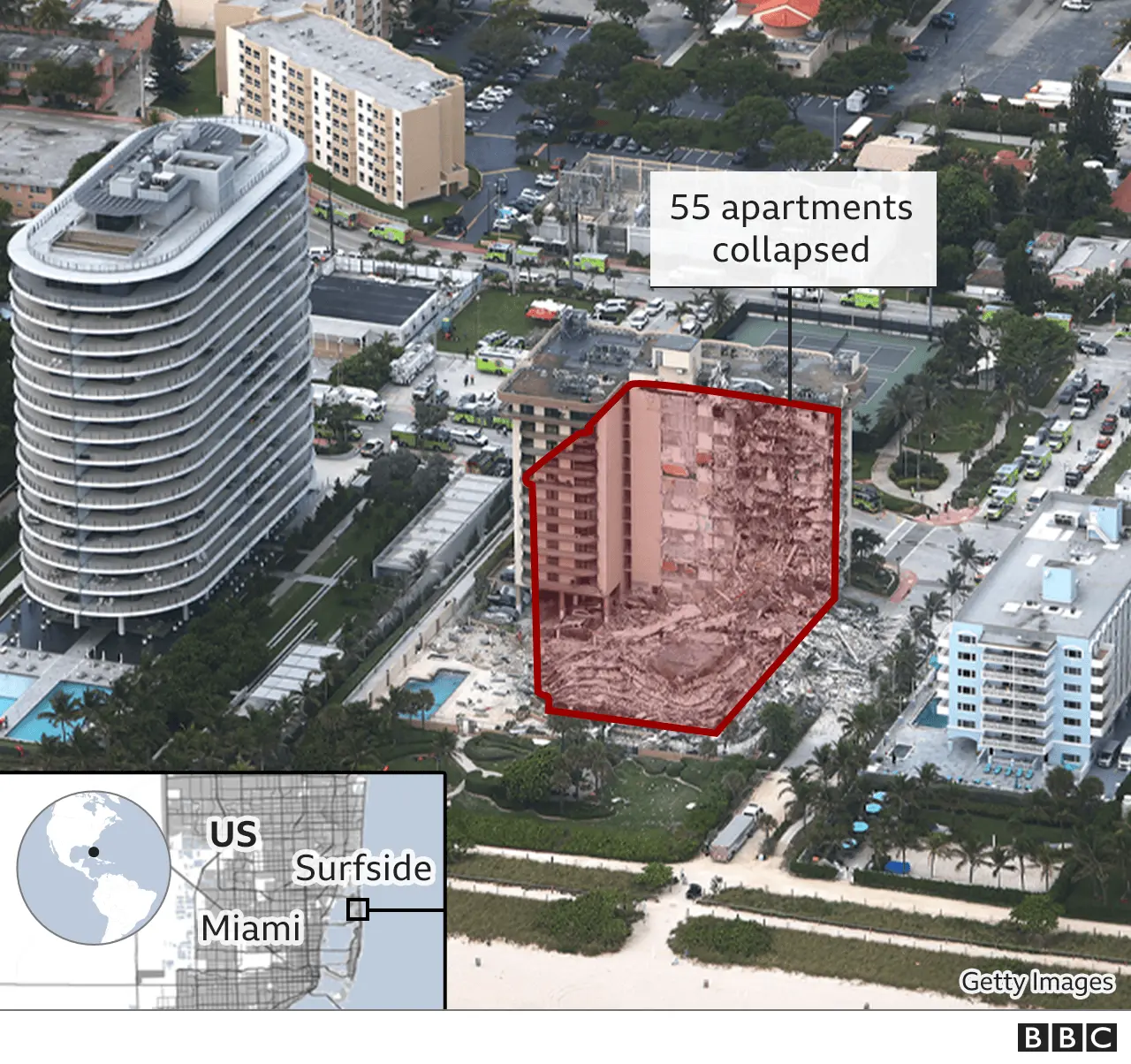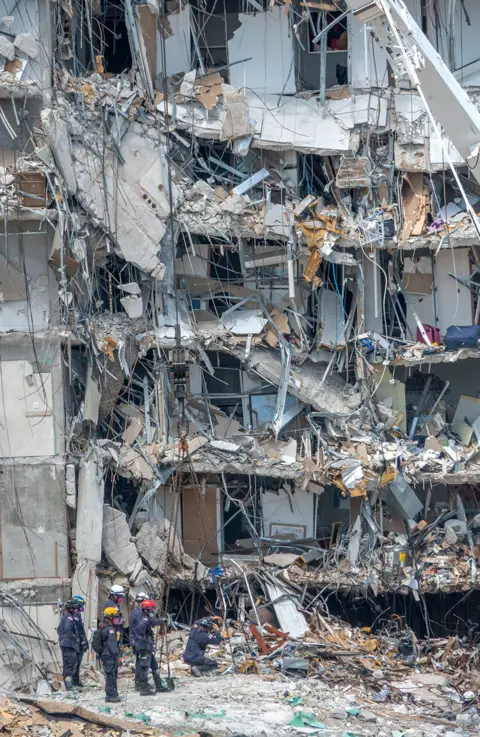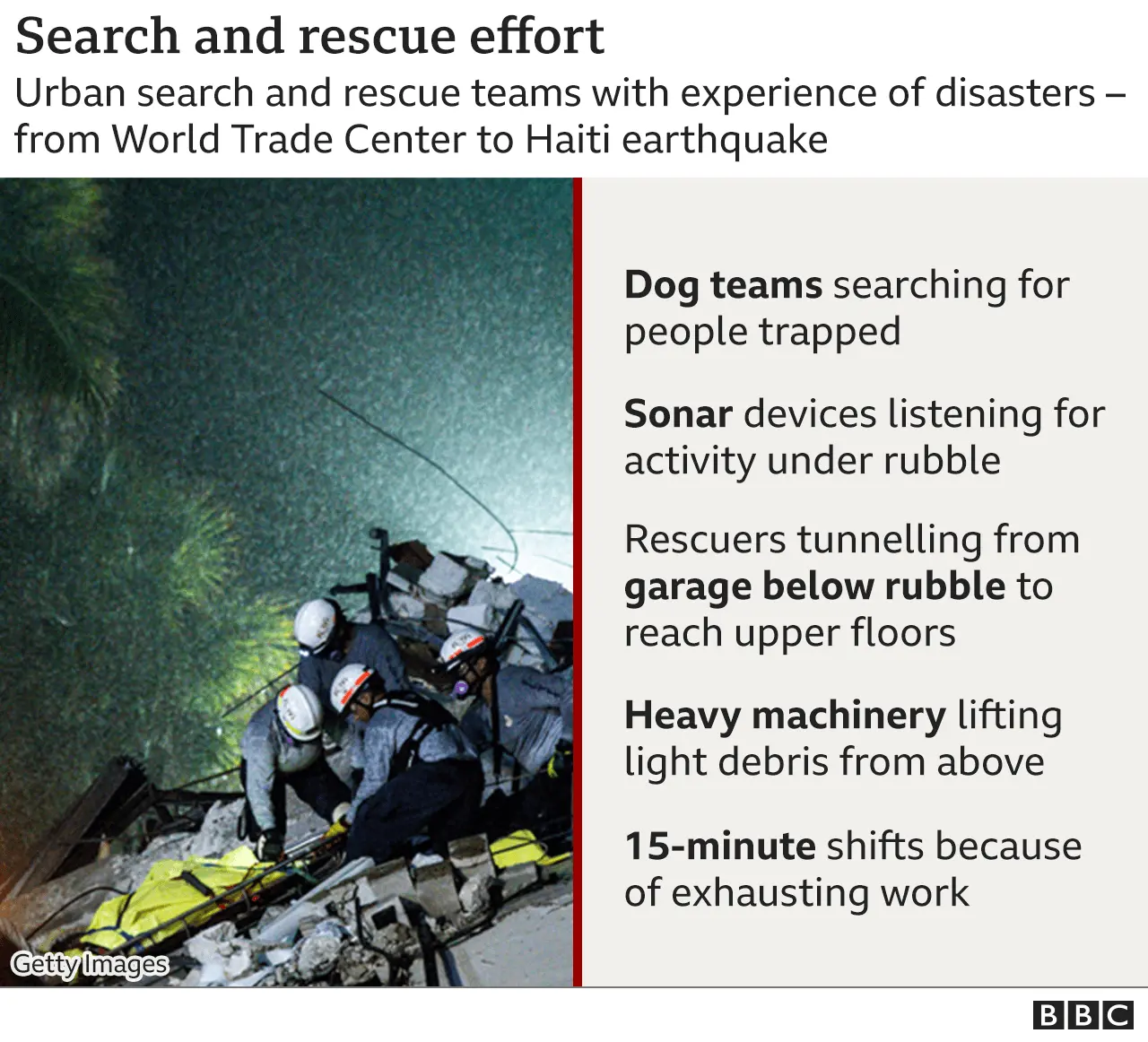Miami building collapse: What happened, and how quickly?
 BBC
BBCRescuers are desperately searching for survivors in the rubble of a 12-storey residential building north of Miami that collapsed, trapping people inside.
Here's what we know about what happened.
It happened really quickly
A large section of Champlain Towers, on the seafront in the town of Surfside, crumbled to the ground in the early hours of Thursday.
It took just a few seconds.
 BBC
BBC
People described hearing what sounded like thunder before seeing a huge cloud of dust.
One compared the scene to the 11 September 2001 attacks on the Twin Towers in New York.
Nearly half the building crumbled
The building contained 136 apartments and 55 of them collapsed, leaving piles of debris.
Images taken before and after the collapse show the extent of the damage.
The shattered and compressed layers of the building's collapsed floors can be seen on the ground.
The collapse happened while many were still sleeping.
Residents' furniture and belongings could be seen in what remained of their homes.
 EPA
EPA
Many were trapped in the rubble
At least nine people have been killed but more than 150 are missing.
As families desperately wait for news, search teams have been working around the clock using sonar cameras and specially trained dogs to scour the rubble for survivors.
 BBC
BBC
Dozens have been pulled free.
Teams have also been tunnelling from an underground car park below the building in an effort to search for air pockets where people may have survived.
But officials say the efforts are dangerous as further rubble could collapse on top of them.
The building 'was sinking'
What caused the 40-year-old building to collapse remains unclear.
But it was undergoing a standard "recertification" process and required repairs, officials said.
A 2018 engineer's report into the building flagged "major structural damage" to the concrete platform beneath the swimming pool deck, as well as "abundant cracking… of columns, beams and walls" in the garage.
Experts who studied the area where the building stood said the land it was built on was sinking during the 1990s.
 BBC
BBCThe study from a researcher at Florida International University found that the area around the building, constructed on reclaimed wetlands, had been sinking at a rate of two millimetres per year for the last three decades.
However, the report's author, Prof Shimon Wdowinski, cautioned that the study was just a snapshot in time and said land subsidence alone was not likely to cause a building's collapse.
A full investigation into the causes of the collapse is set to begin after the rescue mission.
By Dominic Bailey, David Brown, Ana Lucía González, Mike Hills, Tom Housden, Sana Jasemi, Lucy Rodgers, Joy Roxas and Sean Willmott.
